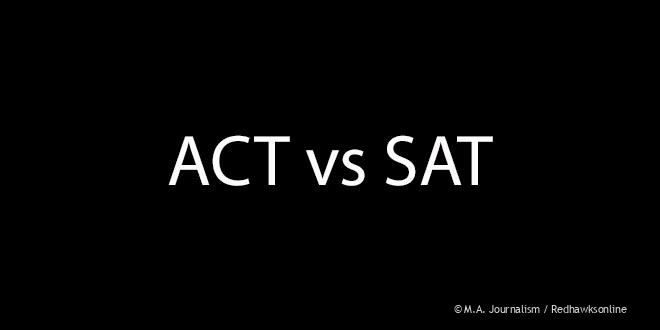Everyone has to take them, but which one will suit you?
The big tests. Everyone in high school knows what they are. They’re the tests that can make or break your decision on where to go to college. But, depending on your skill set, you may want to review them to see which one will better suit you as a student.
The ACT and SAT are both standardized tests that most students take during their junior year. However, they are both different and have a few key features that separate them.
“The biggest difference between the two tests is that the ACT has a science section and the SAT does not,” said Minnehaha counselor Kristin Overton. “In place of the science section, the SAT has an additional math section. The other benefit of the SAT for some students is that they get a little bit more time per section than the ACT.”
Other main differences between the two tests include the scoring and the number of questions.
For some students, it’s a hard decision to decide which test to take because they don’t know which one will benefit them more based on their skill set. That’s why Minnehaha has counselors that will do their very best to set you up for success.
“It really depends on their skill set and where they thrive academically,” said Overton. “If a student is really strong in math and tends to do well there, sometimes the SAT is a better option for them because it gives them more of a chance to shine that way. Whereas if there’s a kiddo that is more of a toss-up who does well in all areas then the ACT is usually a better fit for them.”
There isn’t really an unfair benefit in taking either the ACT or the SAT. It all comes down to how the student performs in their subjects.
Another worry students might have is if the college(s) they want to apply to only accept one of the tests or that their test scores will make or break their chance of getting into their favorite school. However, most colleges look farther into a student’s high school resume than just the test scores.
“Often students think the first thing we look at is their GPA and test scores,” said Dan Franklin, the Associate Dean of Admissions at St. Olaf. “We do look at them but given that St. Olaf is very rigorous, we look first at where the applicant went to school and what was offered at that school. We expect to see some students to take the college prep courses (AP, IB, PSEO, Honors, etc.) at their respective schools. We also look closely at the student’s essay and require them to do a supplemental writing form which means we will see an additional one or two essays from each applicant. The tests are a piece in the application process, but there are many other factors that contribute to the application other than just the tests.”
Another use for these test scores is in the placement process and with financial aid. A good test score might not be the sole reason a person gets into a college, but it could be the reason why they’re able to afford it. At the University of Iowa, there are multiple scholarships for different levels of ACT/SAT scores and GPA. Other schools use it for placement into certain classes.
“We use the test scores to assist with placement into Math and English courses,” said Devon G. Ross, the Director of Undergraduate Admission at Augsburg University.
The ACT and the SAT are two of the most important tests people will take in high school. They are used for a variety of things whether that be an application, financial aid, or even bragging rights among friends. But it is important that a student knows which one to take in order to be as successful as they can be.

